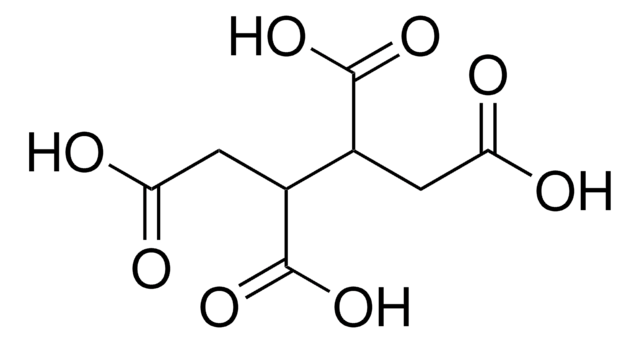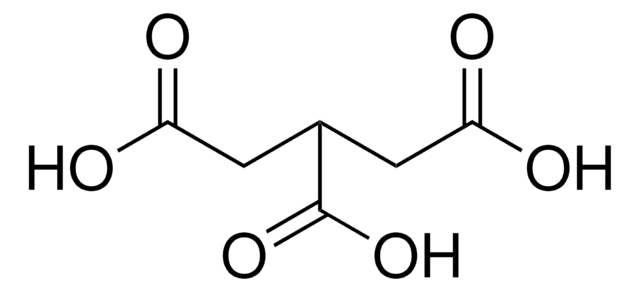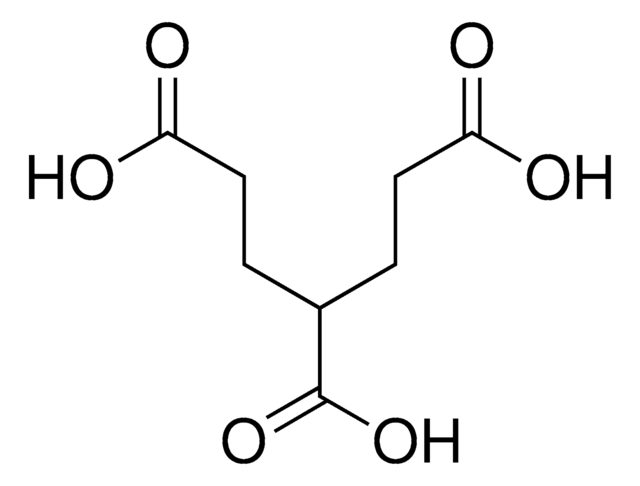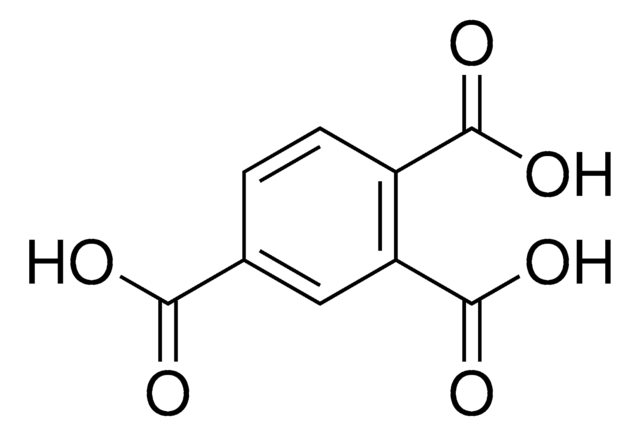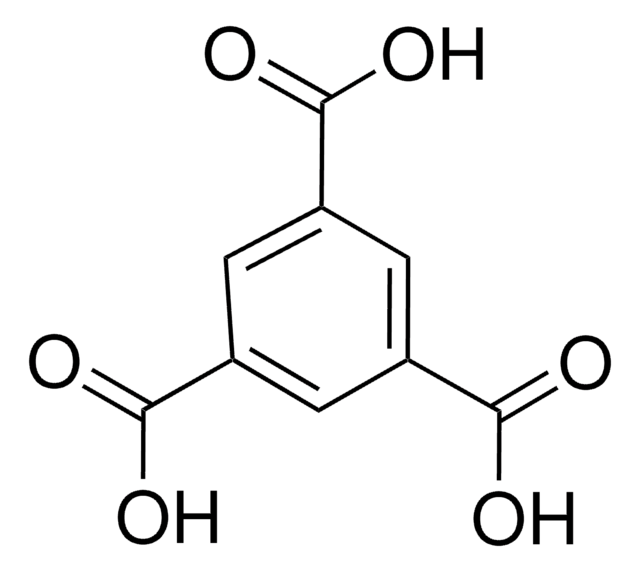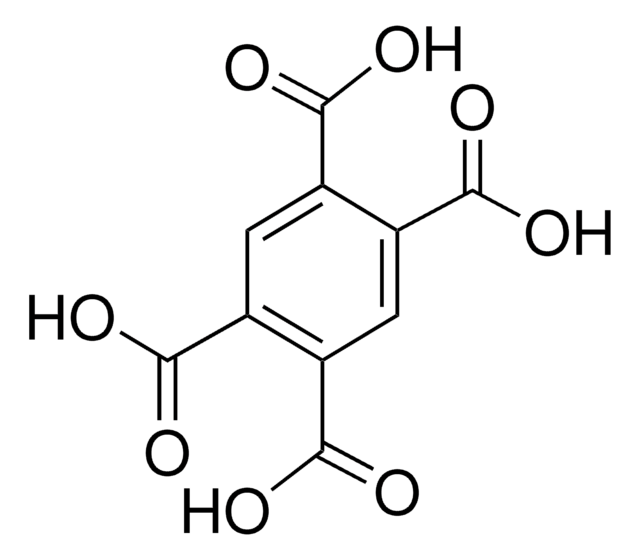514101
1,2,4-Butanetricarboxylic acid
Synonym(s):
1,2,4-Tricarboxybutane, 3-Carboxyhexanedioic acid, NSC 60127, NSC 8447
Sign Into View Organizational & Contract Pricing
All Photos(1)
About This Item
Linear Formula:
HO2CCH2CH2CH(CO2H)CH2CO2H
CAS Number:
Molecular Weight:
190.15
MDL number:
UNSPSC Code:
12352100
PubChem Substance ID:
NACRES:
NA.22
Recommended Products
mp
117-120 °C (lit.)
functional group
carboxylic acid
SMILES string
OC(=O)CCC(CC(O)=O)C(O)=O
InChI
1S/C7H10O6/c8-5(9)2-1-4(7(12)13)3-6(10)11/h4H,1-3H2,(H,8,9)(H,10,11)(H,12,13)
InChI key
LOGBRYZYTBQBTB-UHFFFAOYSA-N
Gene Information
human ... FOLH1(2346)
Application
Biological activity:
- Tetracoordinate Ni(II) binding by E. coli NikA employs His416 residue in conjunction with three carboxylate ligands from butane-1,2,4-tricarboxylate (BTC)
- Potential inhibitor of glutamate carboxypeptidase II
Signal Word
Warning
Hazard Statements
Precautionary Statements
Hazard Classifications
Eye Irrit. 2 - Skin Irrit. 2 - STOT SE 3
Target Organs
Respiratory system
Storage Class Code
11 - Combustible Solids
WGK
WGK 3
Flash Point(F)
Not applicable
Flash Point(C)
Not applicable
Personal Protective Equipment
dust mask type N95 (US), Eyeshields, Gloves
Choose from one of the most recent versions:
Already Own This Product?
Find documentation for the products that you have recently purchased in the Document Library.
Customers Also Viewed
IR spectroscopy study of cyclic anhydride as intermediate for ester crosslinking of cotton cellulose by polycarboxylic acids. V. Comparison of 1, 2, 4-butanetricarboxylic acid and 1, 2, 3-propanetricarboxylic acid.
Mao Z and Yang CQ.
Journal of Applied Polymer Science, 81(9), 2142-2150 (2001)
Some Syntheses of 1, 2, 4-Butanetricarboxylic Acid1.
Lynn JW and Roberts RL.
The Journal of Organic Chemistry, 26(11), 4303-4305 (1961)
Samad Ahadian et al.
Acta biomaterialia, 52, 81-91 (2016-12-13)
Polymer biomaterials are used to construct scaffolds in tissue engineering applications to assist in mechanical support, organization, and maturation of tissues. Given the flexibility, electrical conductance, and contractility of native cardiac tissues, it is desirable that polymeric scaffolds for cardiac
Ren-Qi Wang et al.
Analytica chimica acta, 853, 608-616 (2014-12-04)
A hydrophilic interaction liquid chromatography (HILIC) method was developed to measure the composition of humic substances from river, reservoir, and treated wastewater based on their physicochemical properties. The current method fractionates the humic substances into four well-defined groups based on
Our team of scientists has experience in all areas of research including Life Science, Material Science, Chemical Synthesis, Chromatography, Analytical and many others.
Contact Technical Service